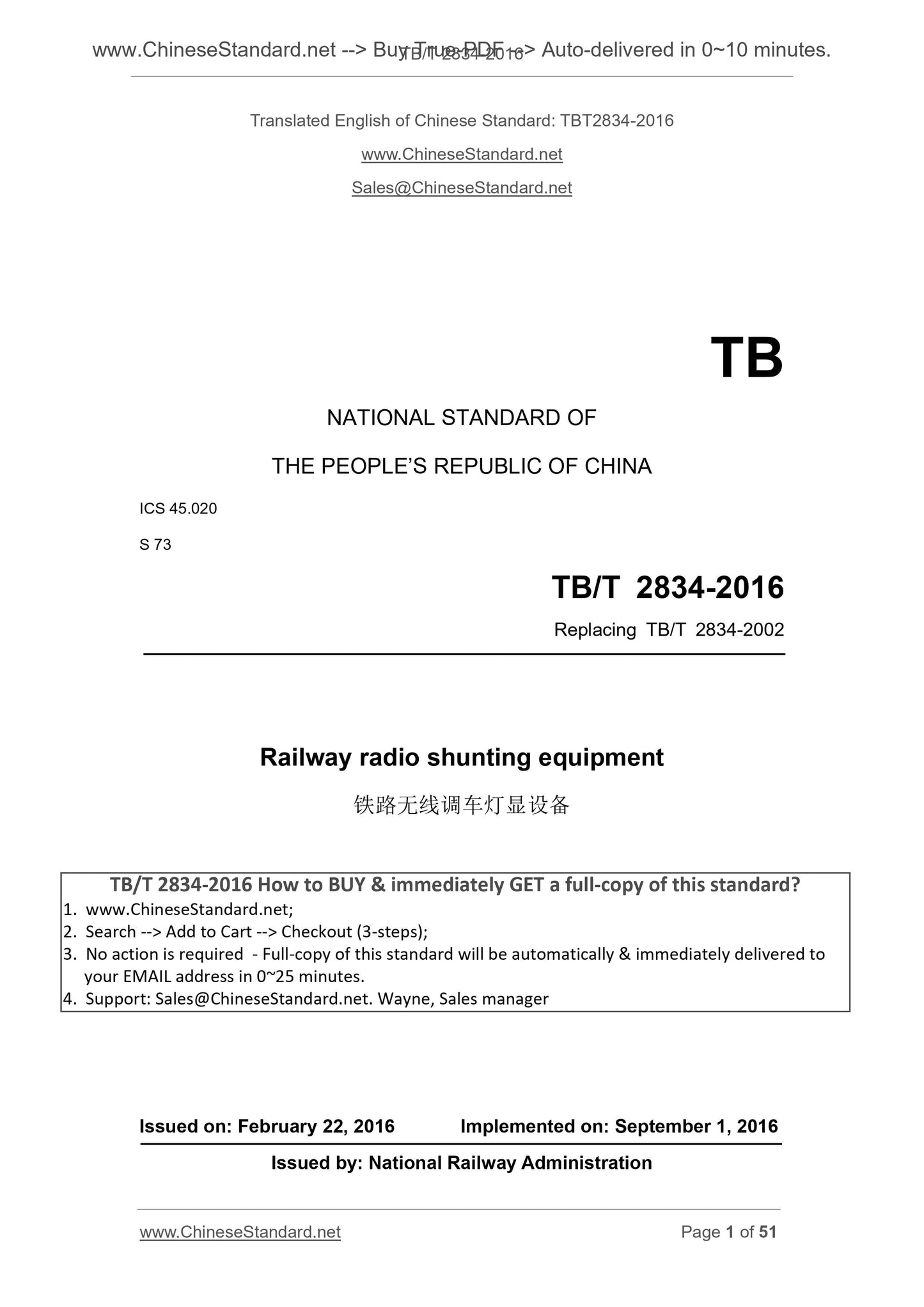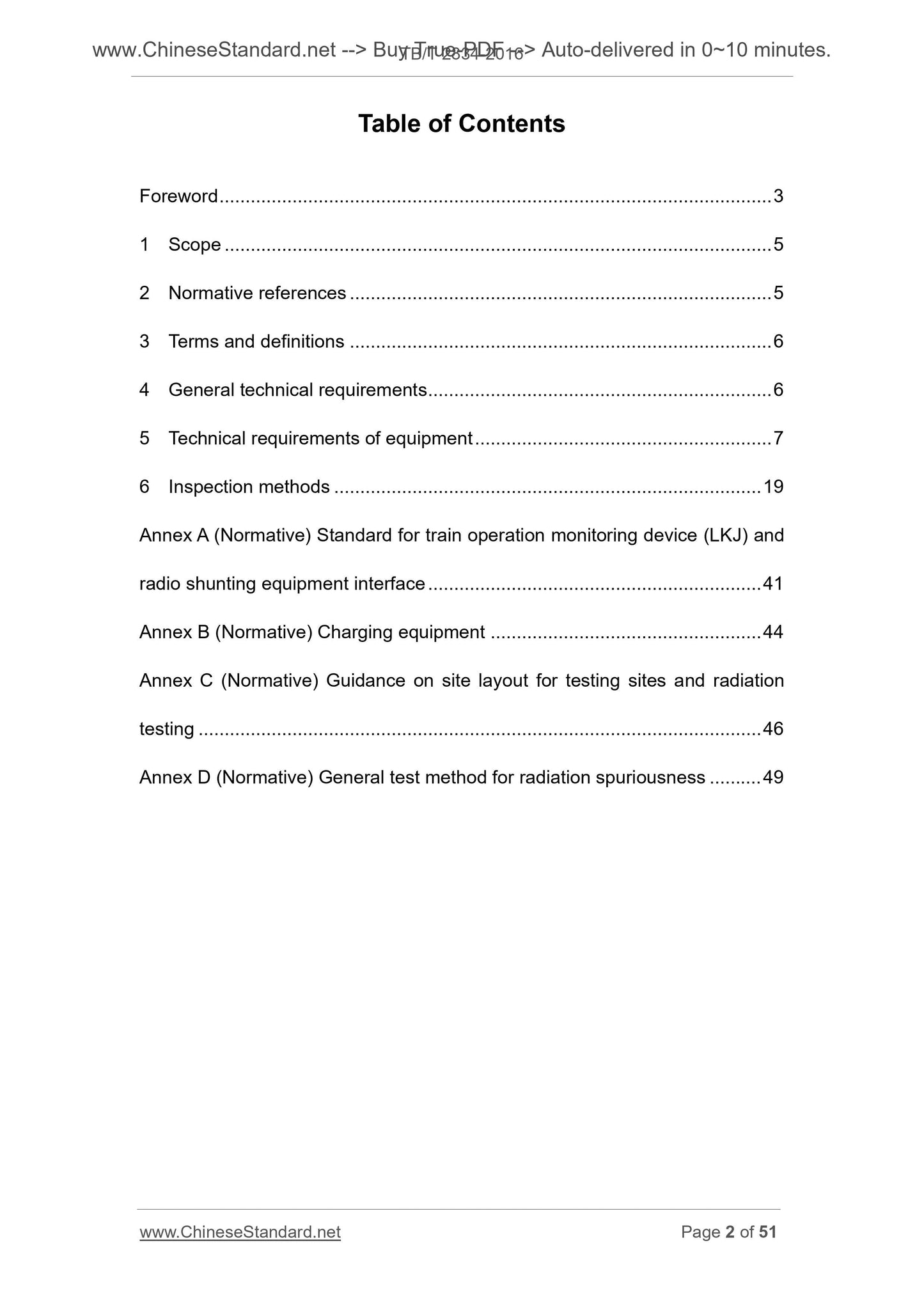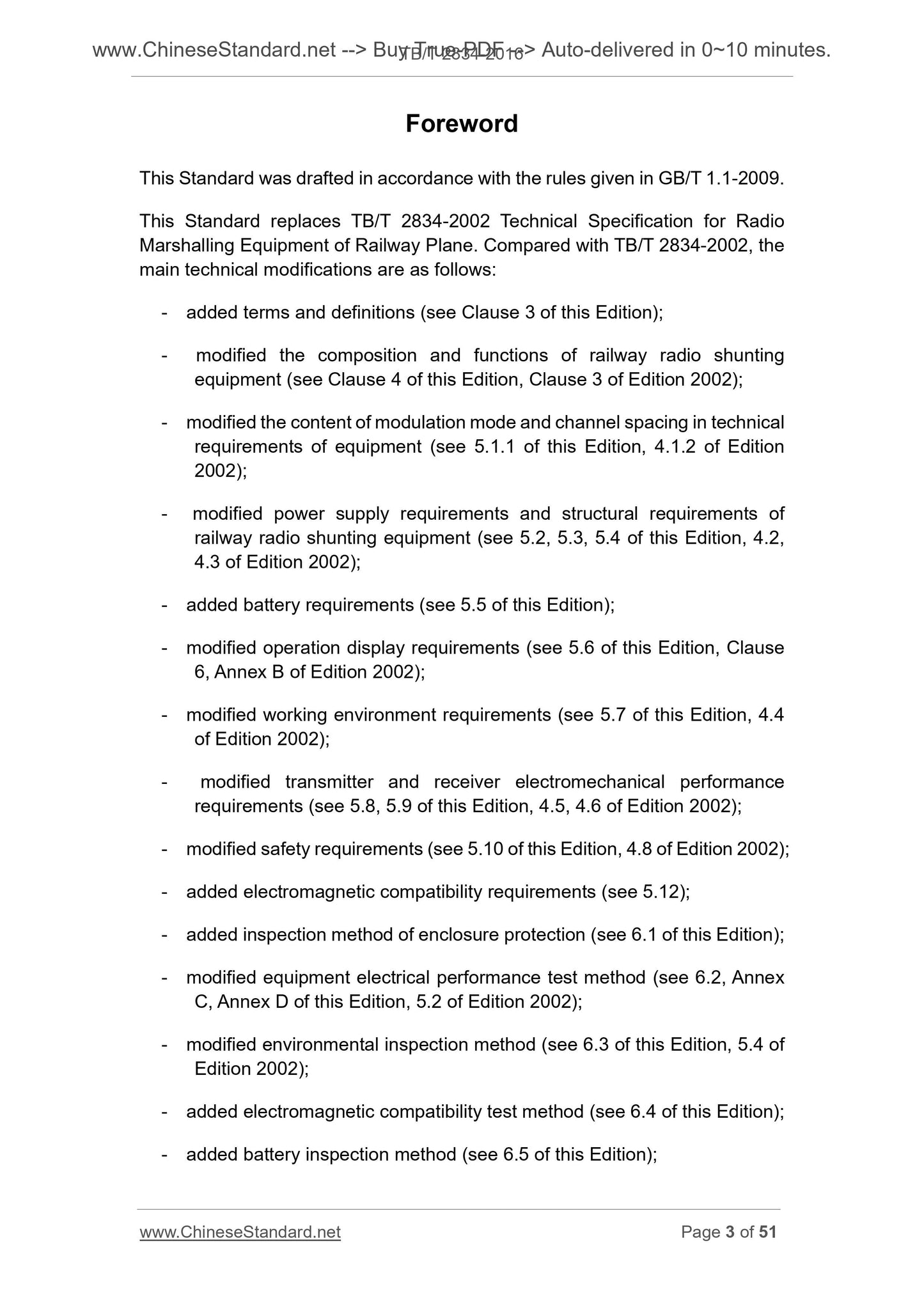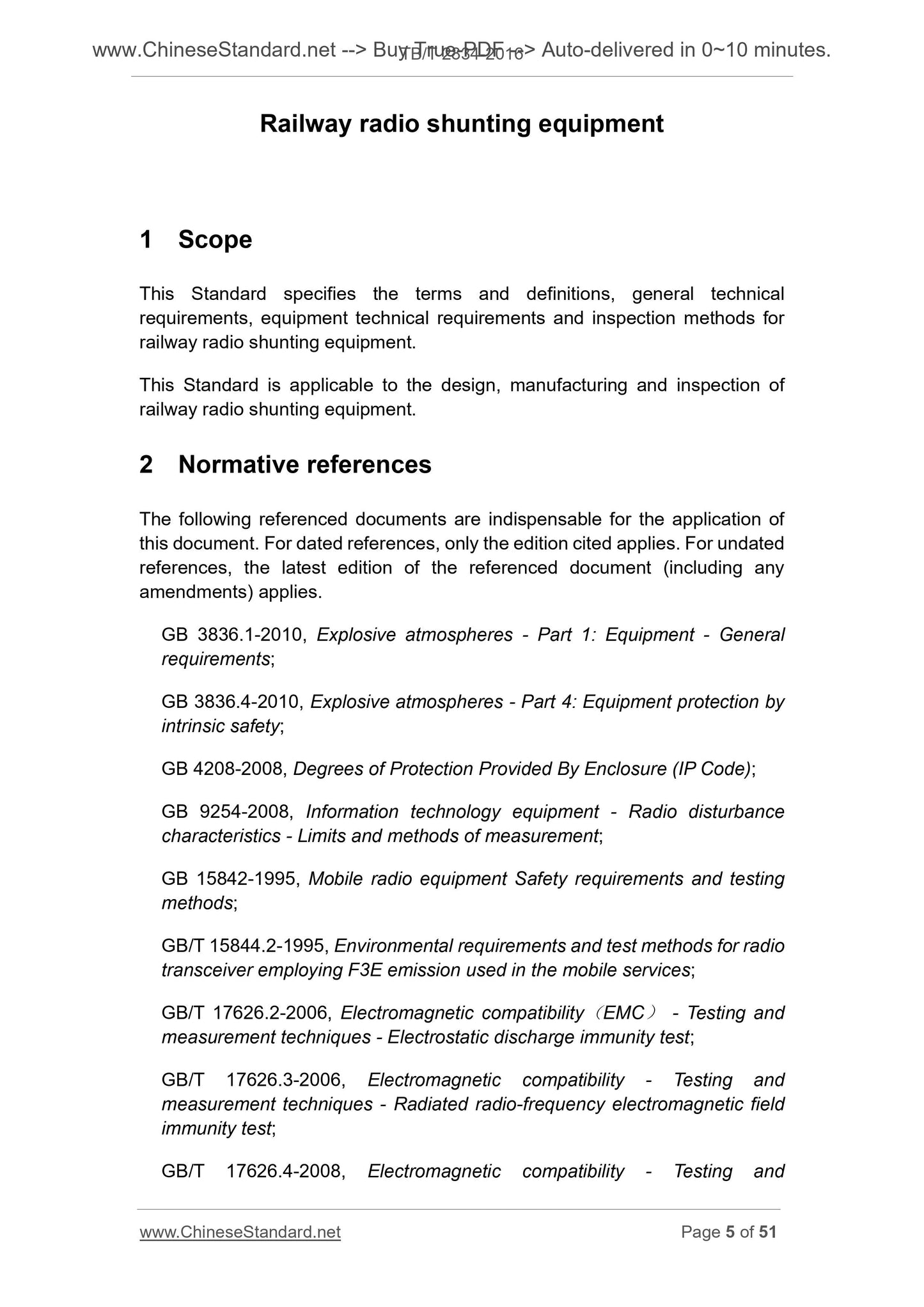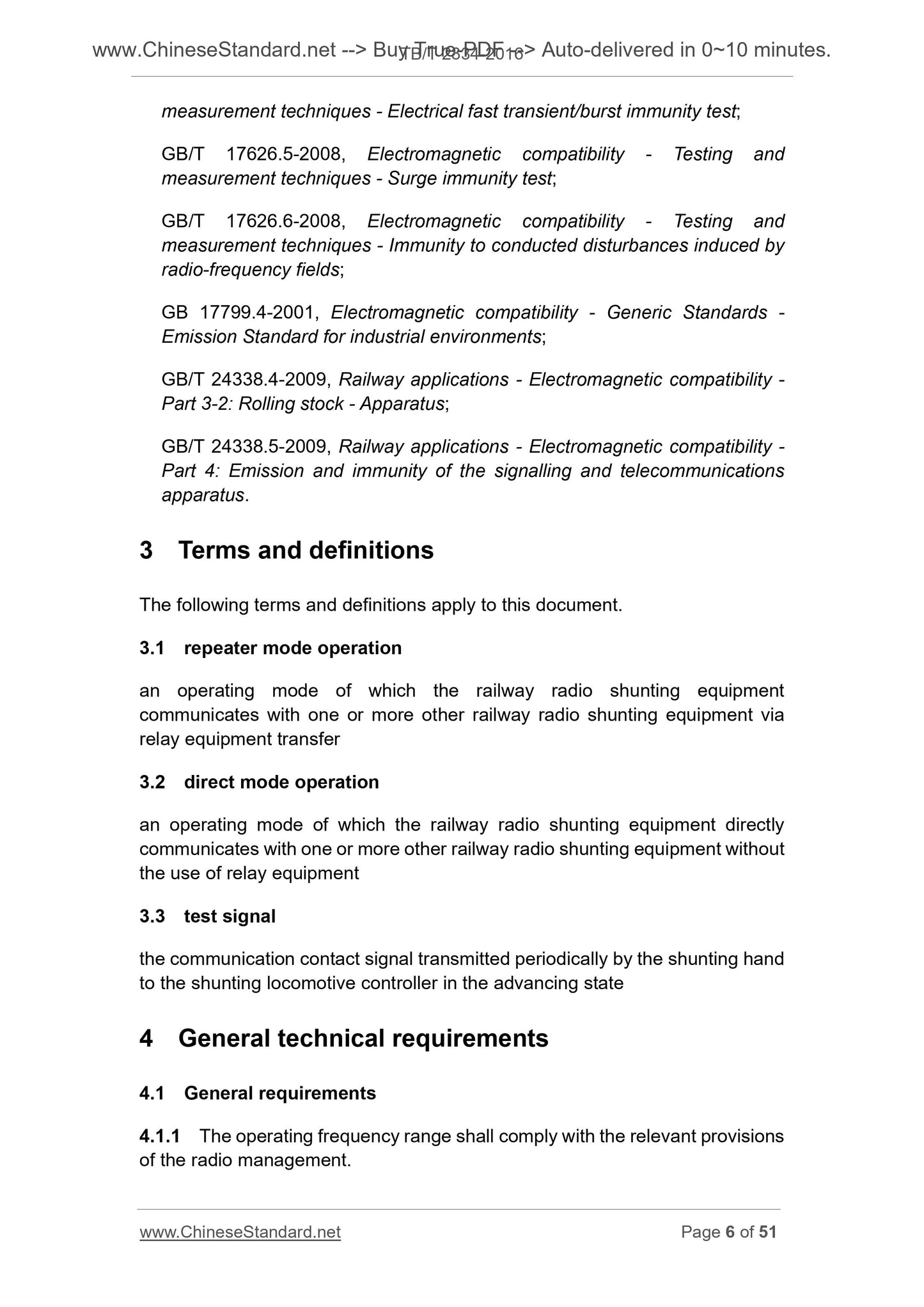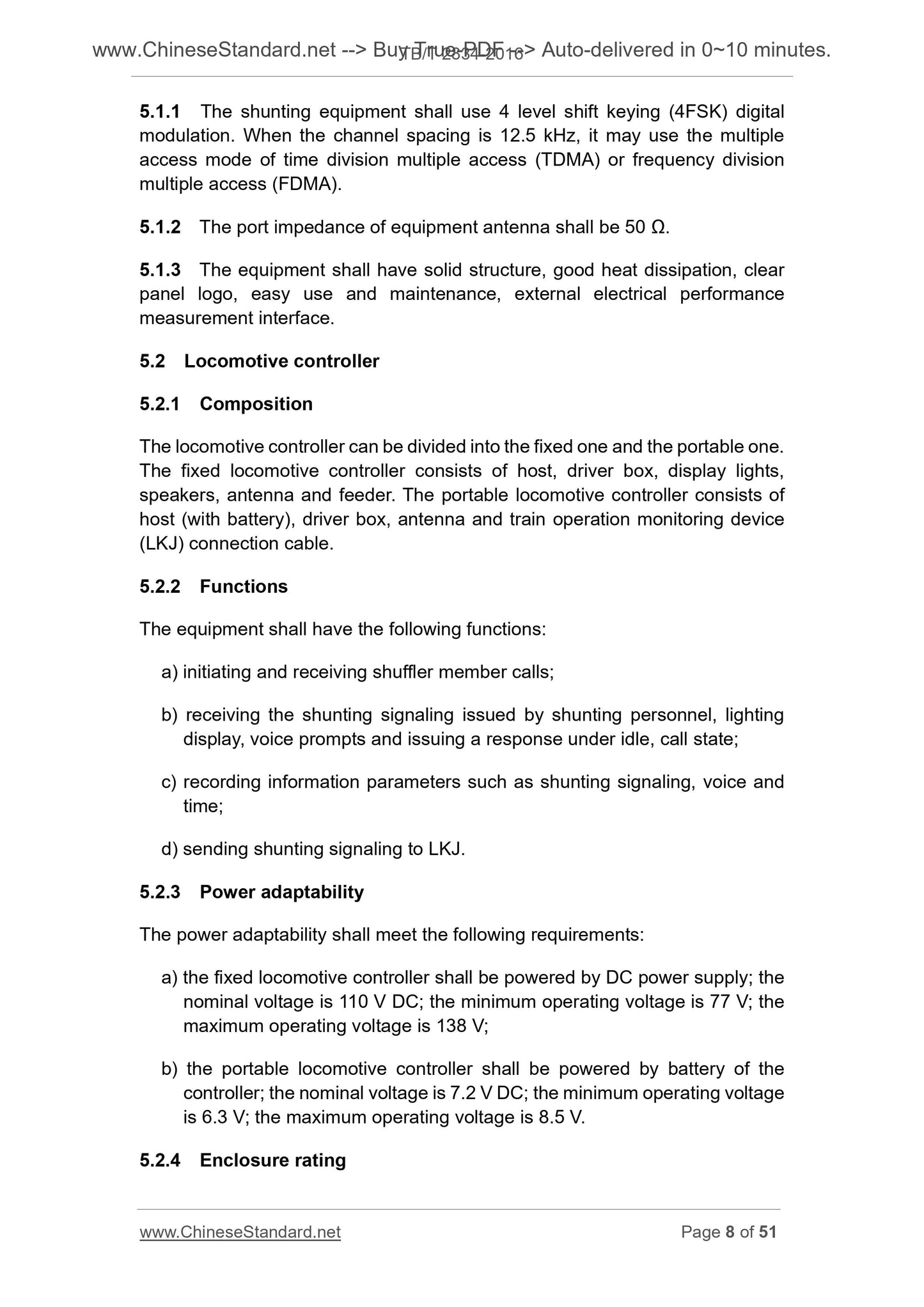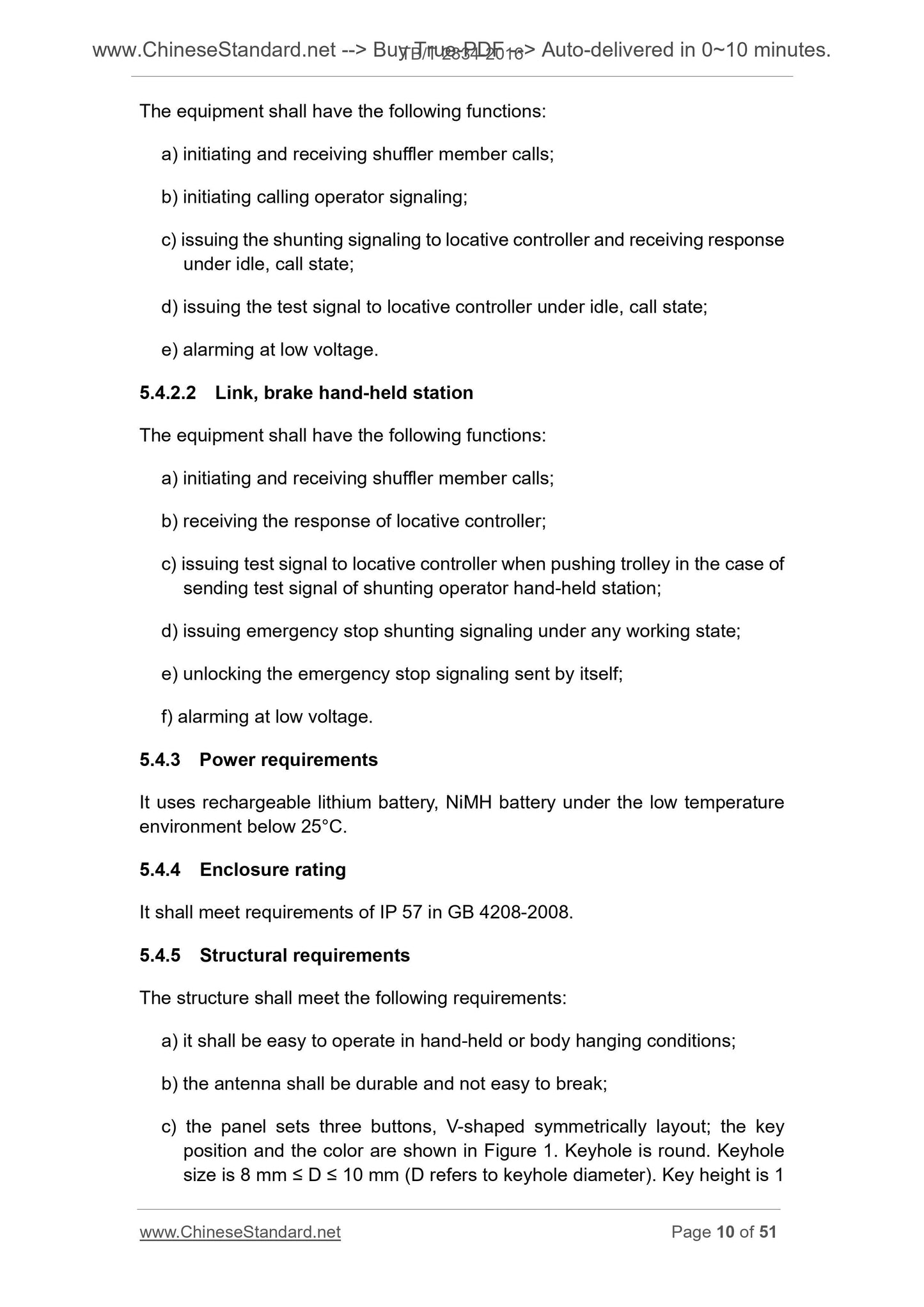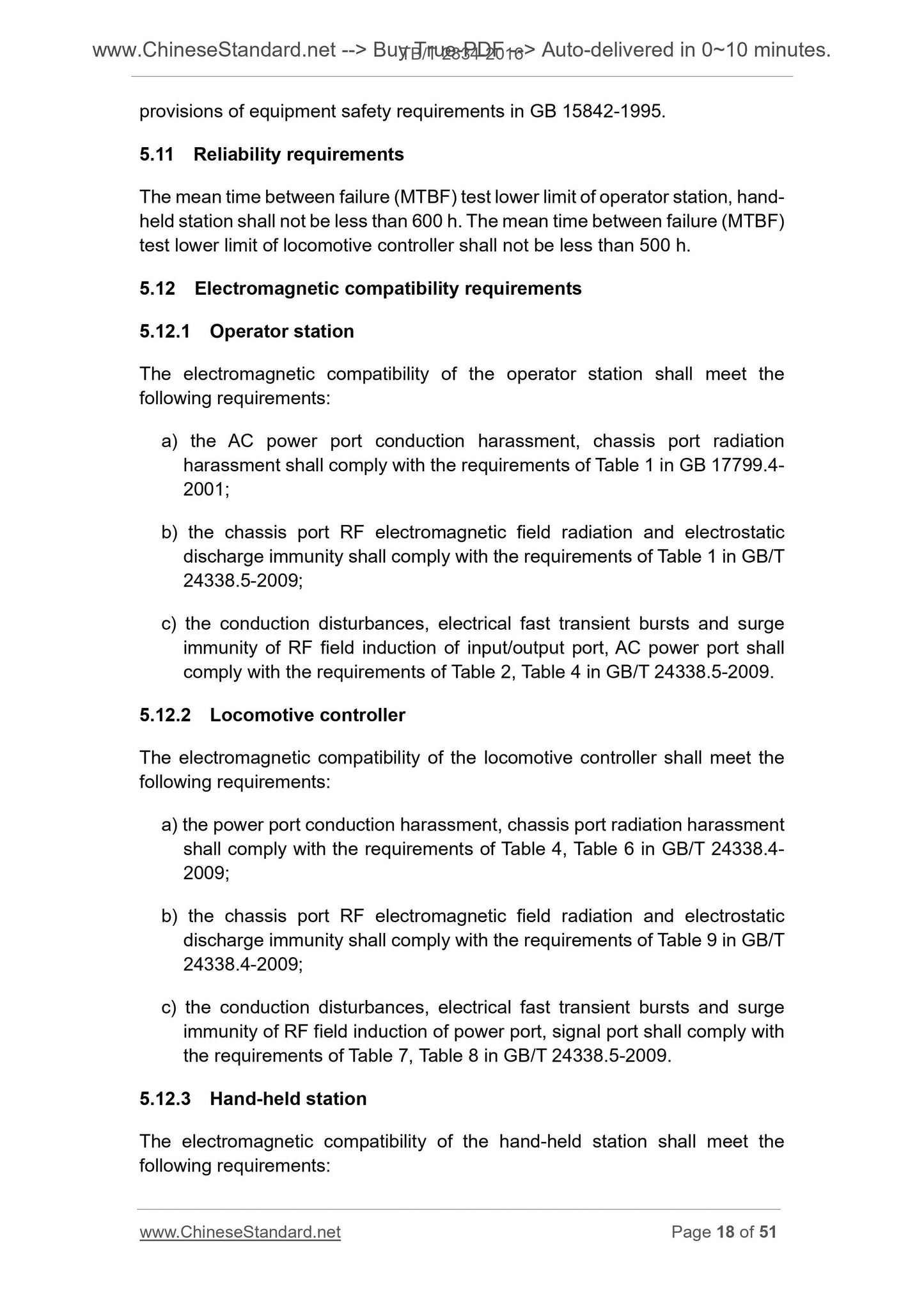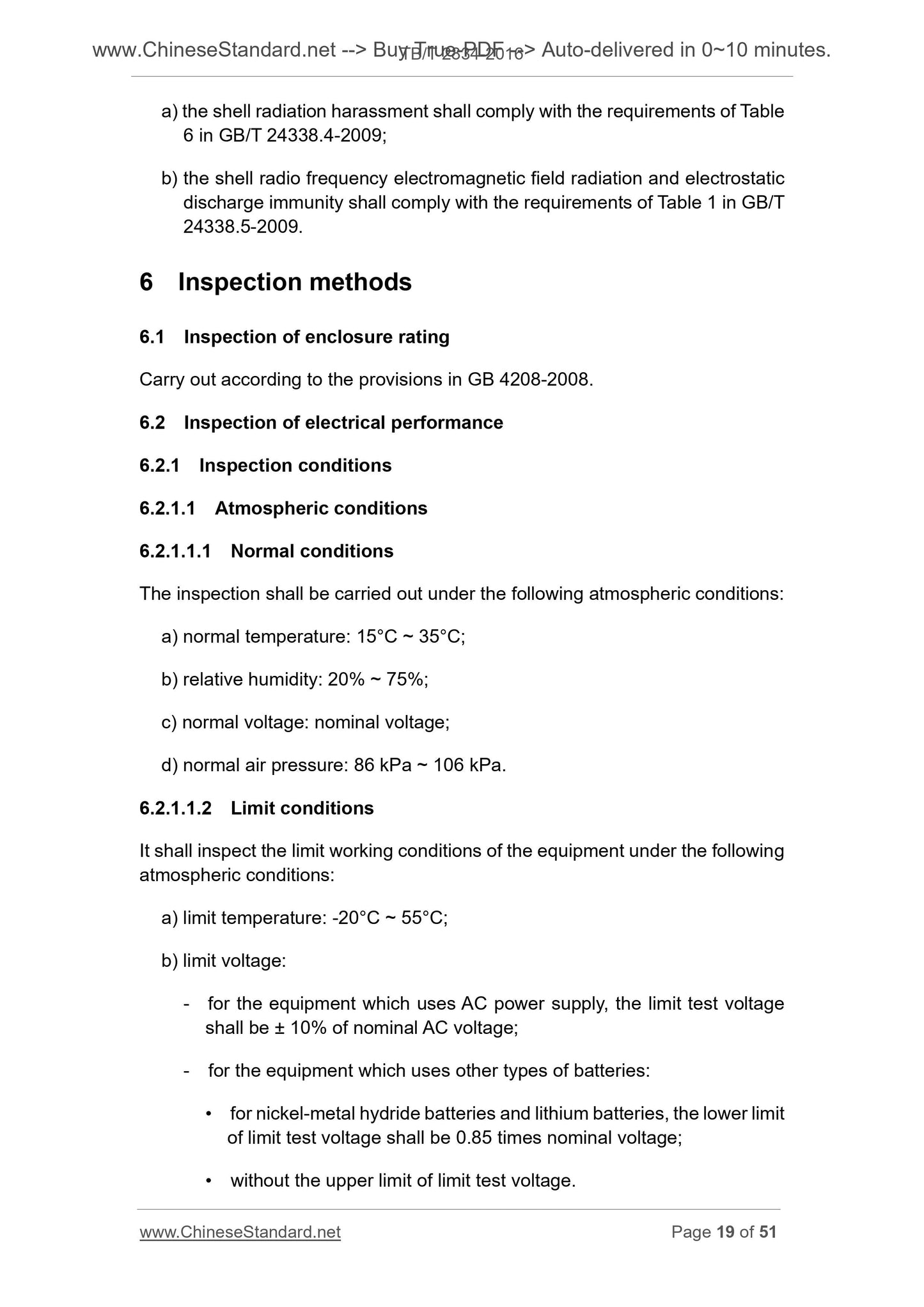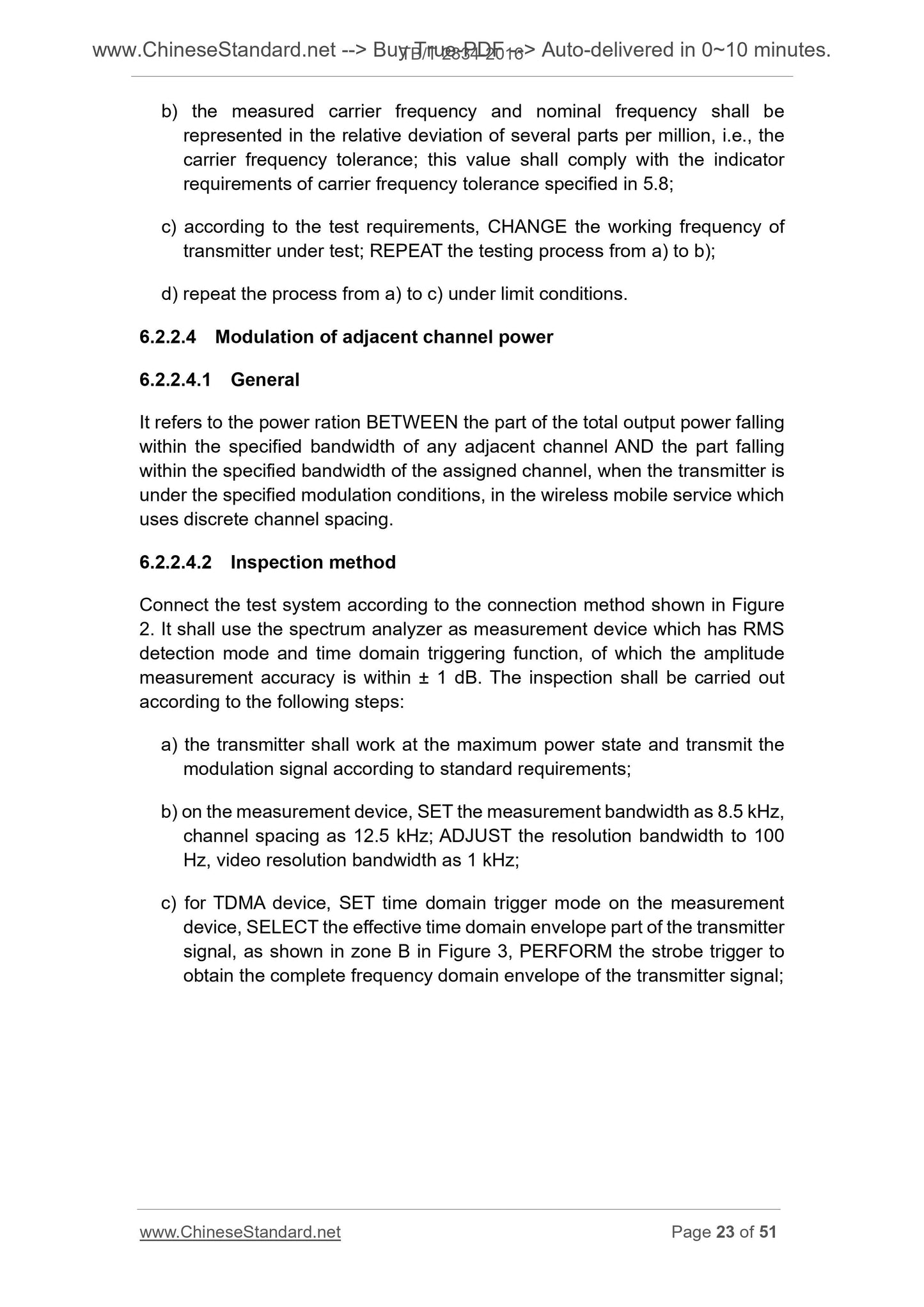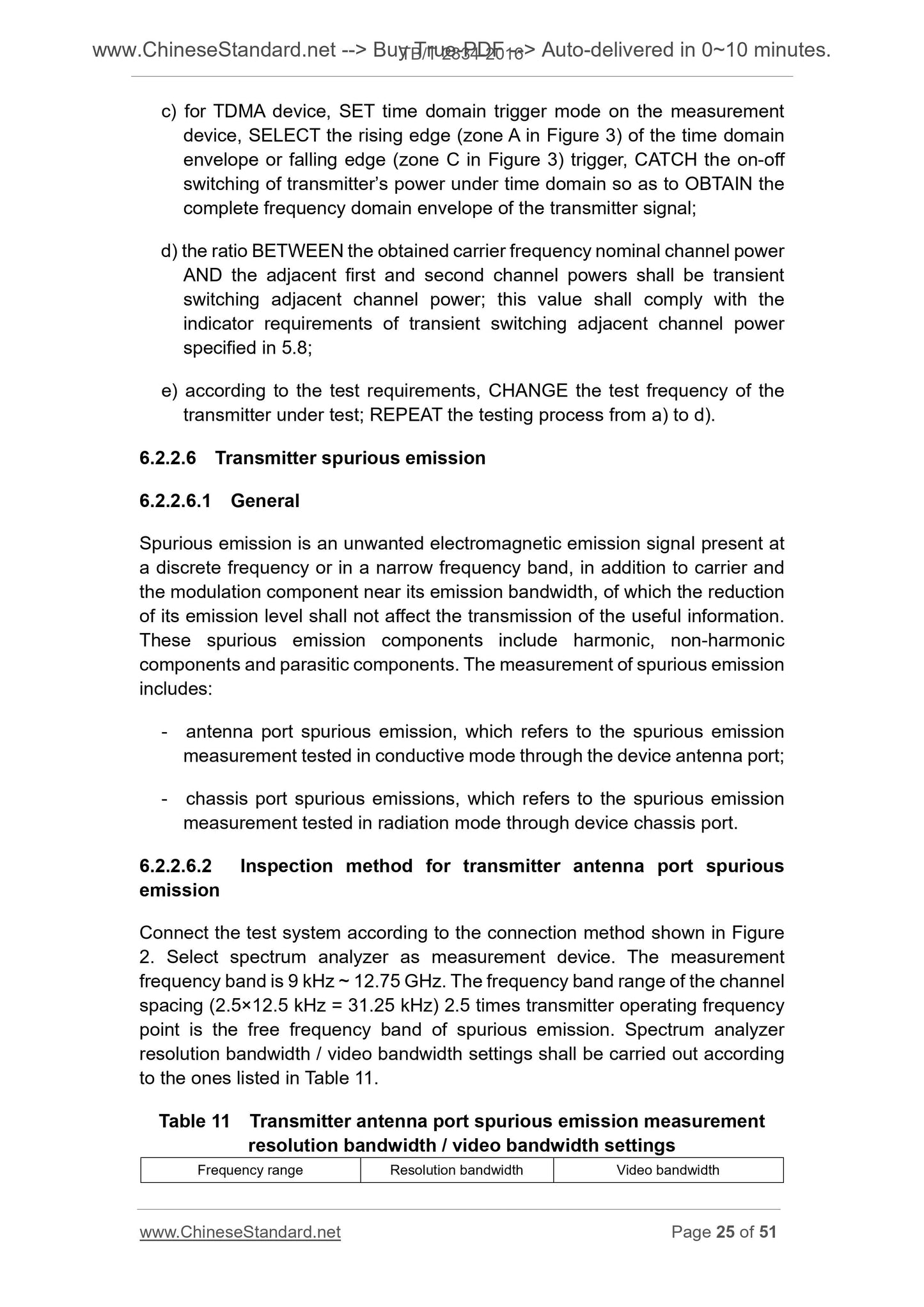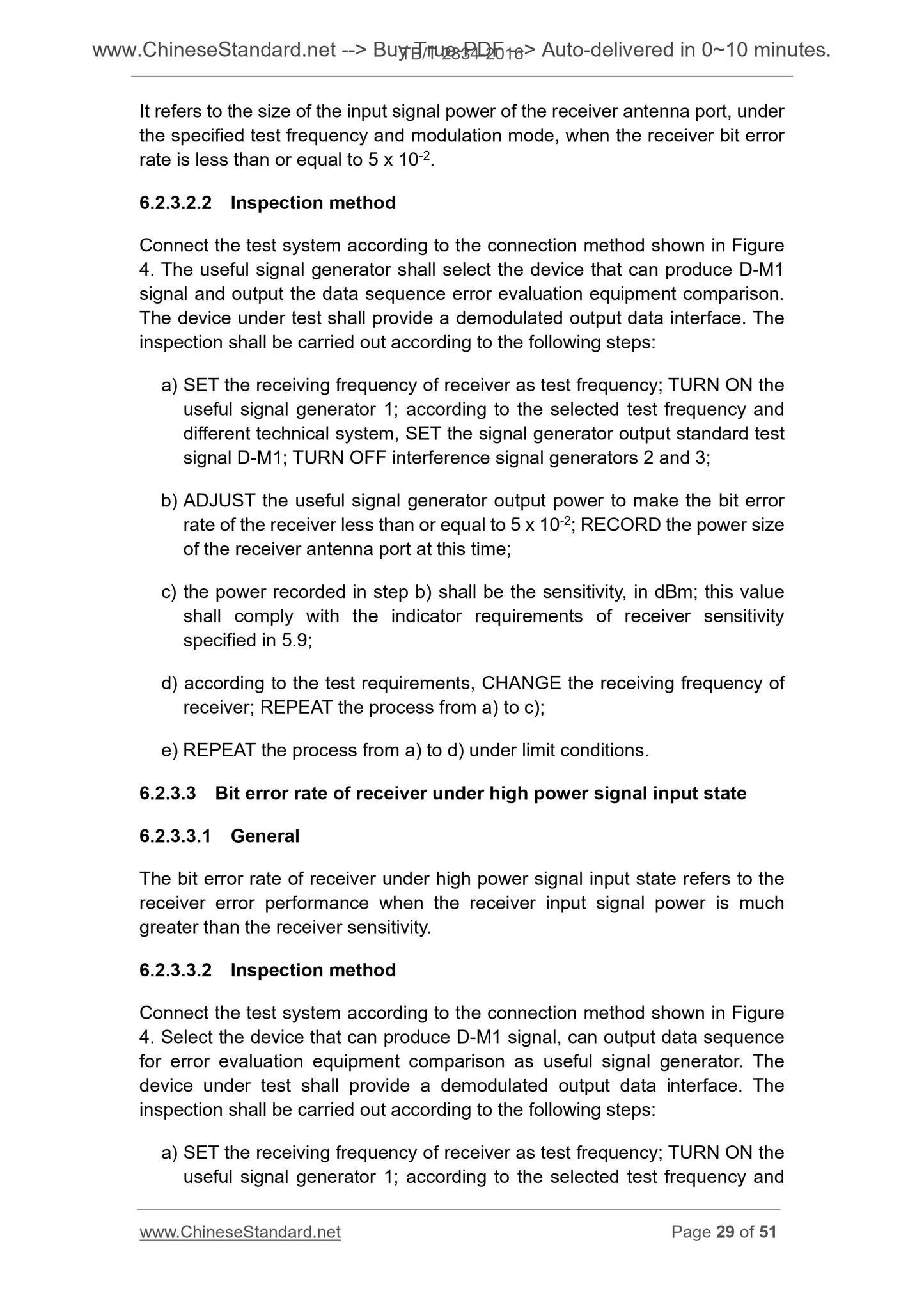1
/
of
12
www.ChineseStandard.us -- Field Test Asia Pte. Ltd.
TB/T 2834-2016 English PDF (TB/T2834-2016)
TB/T 2834-2016 English PDF (TB/T2834-2016)
Regular price
$145.00
Regular price
Sale price
$145.00
Unit price
/
per
Shipping calculated at checkout.
Couldn't load pickup availability
TB/T 2834-2016: Railway radio shunting equipment
Delivery: 9 seconds. Download (and Email) true-PDF + Invoice.Get Quotation: Click TB/T 2834-2016 (Self-service in 1-minute)
Newer / historical versions: TB/T 2834-2016
Preview True-PDF
Scope
This Standard specifies the terms and definitions, general technicalrequirements, equipment technical requirements and inspection methods for
railway radio shunting equipment.
This Standard is applicable to the design, manufacturing and inspection of
railway radio shunting equipment.
Basic Data
| Standard ID | TB/T 2834-2016 (TB/T2834-2016) |
| Description (Translated English) | Railway radio shunting equipment |
| Sector / Industry | Railway and Train Industry Standard (Recommended) |
| Classification of Chinese Standard | S73 |
| Classification of International Standard | 45.020 |
| Word Count Estimation | 30,339 |
| Date of Issue | 2016-02-22 |
| Date of Implementation | 2016-09-01 |
| Older Standard (superseded by this standard) | TB/T 2834-2002 |
| Quoted Standard | GB 3836.1-2010; GB 3836.4-2010; GB 4208-2008; GB 9254-2008; GB 15842-1995; GB/T 15844.2-1995; GB/T 17626.2-2006; GB/T 17626.3-2006; GB/T 17626.4-2008; GB/T 17626.5-2008; GB/T 17626.6-2008; GB 17799.4-2001; GB/T 24338.4-2009; GB/T 24338.5-2009 |
| Regulation (derived from) | National Railway Law Branch (2016) on the 5th |
| Issuing agency(ies) | National Railway Administration |
| Summary | This standard specifies the terminology and definition of the railway wireless shunting light display equipment, the overall technical requirements, equipment technical requirements and test methods. This standard applies to the design, manufacture and inspection of railway wireless shunting lights. |
Share
